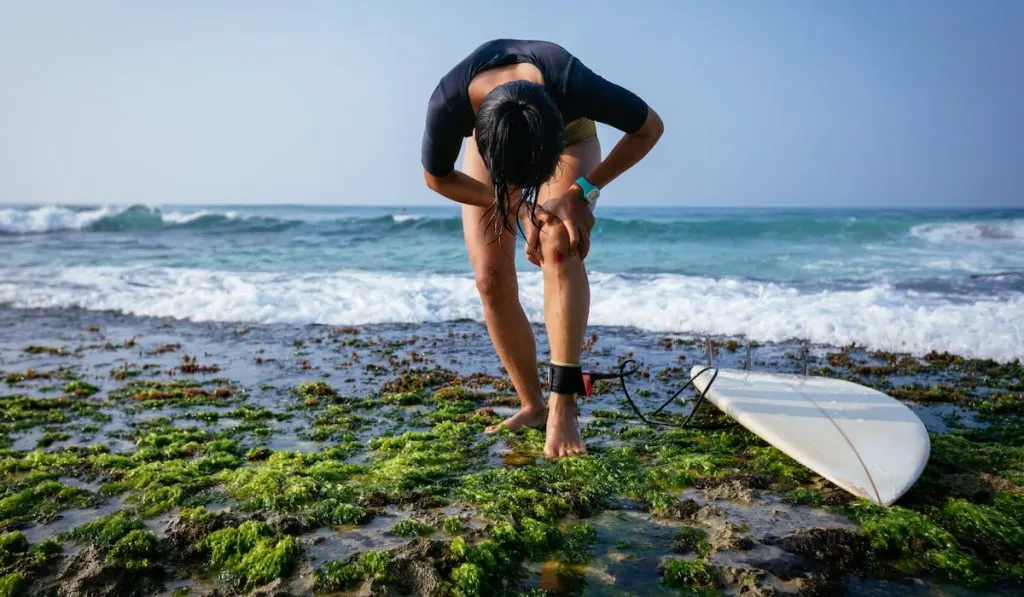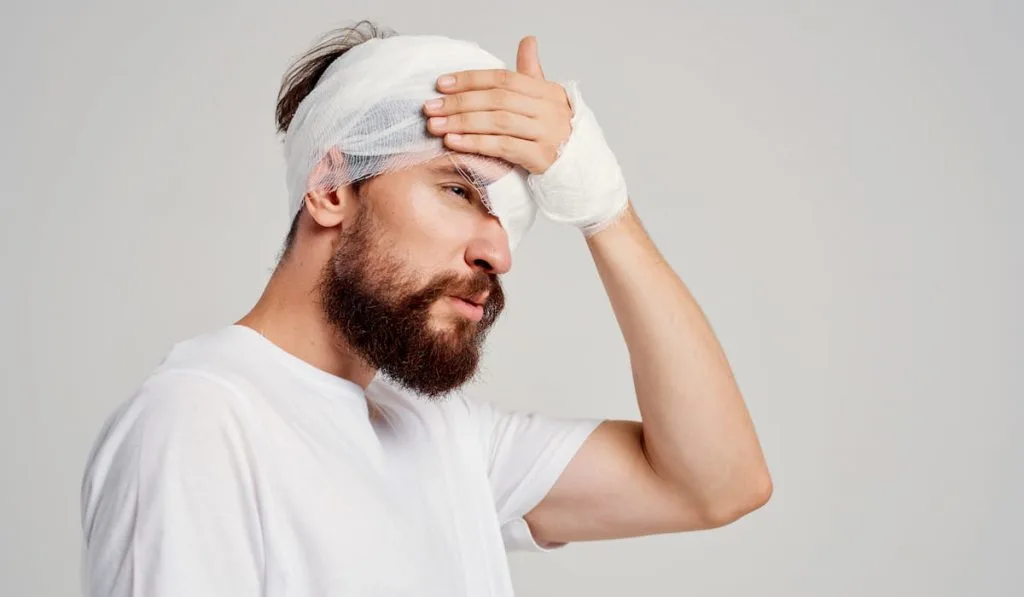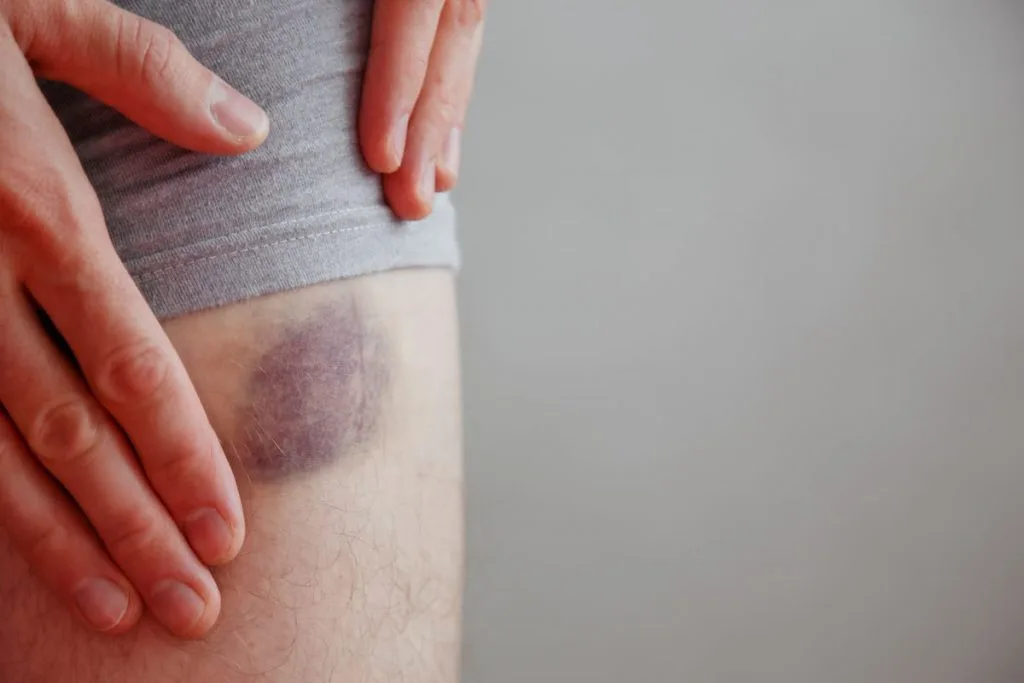For any sport that requires physical activity, there is always the risk of injury. This is also true of surfing.
Various injuries can be sustained while surfing.
Some are mild, while some are severe. Flying surfboards and hidden rocks can really mess up one’s surfing experience. You always need to be extremely careful and watchful while surfing.

The number of injuries sustained from recreational surfing is quite low when compared to some other sports.
However, current research has predicted 80% of pro surfers will have a surfing-related injury at some point in their careers. It also suggests 60% of pro surfers will get injured at least once a season.
Most of the injuries sustained by surfers are from a surfboard. The nose, tail, rail, and fins of a surfboard can damage the eyes, lips, ears, and head.
So when you are hitting the waves or just paddling on your board, think of it as a helpful but potentially harmful resources and be careful.
This article will focus on explaining common surfing injuries. We will take a look at their severity, how to avoid getting hurt, and the common complications that can occur from these injuries.

9 Most Common Surfing Injuries
1. Lacerations
Lacerations are one of the most common injuries surfers encounter. They are caused by sharp reefs or surfboard fins.
Lacerations may not seem like much since they are usually mild. But if they are not treated quickly, the cuts can lead to various infections, including Hepatitis A or a staph infection.

A staph infection is no joke. In 2017, 119,000 people had staph infections, and almost 20,000 people died.
Once you sustain any form of laceration, you should leave the beach immediately and head to a clinic for treatment.
While there are several ways to avoid scrapes and cuts, none of them will offer you 100% protection.
One way to avoid lacerations is to use softer fins. With softer fins, the possibility of being cut by your surfboard is markedly reduced.
You can also put on booties to prevent your feet from getting cut by coral.
If you get a laceration, disinfect the wound and apply pressure to the affected area keeping it above heart level.
If the bleeding does not stop, keep applying pressure and seek emergency medical assistance.
2. Head Trauma
Head traumas are sustained when your head collides with an underwater boulder, your surfboard, someone else’s head, or the ocean floor.
If you are new to surfing, it is best to use a foam board since it is less likely to cause head trauma. To avoid any serious head trauma from head collisions, some surfers also use helmets.
Fractures to the neck, jaw, and face as well as spinal fractures and concussions all require instant medical attention. Call an ambulance or doctor immediately.

3. Eye Damage
A surfboard has a sharp and pointed tip. If this tip makes contact with your eye, things could go very bad, you could suffer a serious injury or even lose your sight.
Try not to collide with other surfers and keep a safe distance when surfing. Your board is already a hazard.
You do not need another board in the way to cause any harm. You can also put a soft nose guard on your board.
If your eye gets injured and you notice any bleeding from the eye socket or any vision loss, seek immediate treatment and call an ambulance.
If left untreated, eye injuries can lead to permanent blindness.
4. Bruises
You can sustain bruises from having contact with other surfer boards, the beach, and the reef.
Minor bruising should not have you worrying. Most bruises can be treated with ice, compression, elevation, and rest. If the bruising is severe, seek proper medical attention.
You can prevent bruises by adapting good surf etiquette: surf waves of your current level, and keep a safe distance from other surfers when surfing.
When you are close to the beach, try not to dive headfirst off your surfboard.

5. Shoulder Strain
While surfing, you do a lot of paddling, which can take its toll on your shoulders.
Tendonitis and rotator-cuff impingement are shoulder injuries surfers sustain. If your muscles have not developed well enough, do not overexert yourself.
If you have also been surfing regularly for years, you can also be prone to shoulder injuries.
These injuries can cause you severe pain when you go about your daily routine.
Shoulder injuries are common among swimming athletes.
Surfing puts a lot of strain on the body, and the best way to avoid this injury is to stretch. Spend at least 10 minutes to do a warm up before heading to the water.
Many surfers do not like stretching.
But this simple routine helps reduce the risk of getting injured and helps improve your overall performance. You should also know how to paddle more efficiently.

6. Back Pain
You can sustain back injuries when you try to move immediately after a wipeout, especially if your back is poorly conditioned.
With the aid of a sports therapist or physiotherapist, you can treat back injuries. If the back pain persists, seek immediate or additional medical attention.
You can also reduce back injuries with a proper warm-up exercises and a stretch routine after surfing.
Improve your flexibility with Pilates and Yoga and try building your core muscles.
7. Sea Creatures
The biggest fear of any surfer is a shark attack.
Although shark attacks do occur and can be quite fatal, they are not common. In 2018 the United States recorded 53 unprovoked attacks by sharks, with none of the shark attacks being fatal.

Injuries from sea urchins, stingrays, and jellyfish stings are common among surfers. For jellyfish stings, immerse the wound in warm saltwater and remove any leftover tentacles on your skin.
Injuries from a stingray can also be treated with hot water.
Besides treating the wounds using the methods above, see a physician.
You may have to get a prescription for an antibiotic to reduce your chances of getting infected. You may also get an analgesic for the pain.
Sadly, you may not be able to avoid contact with these animals. You are invading their territory when you enter the water.
If you ever get bitten or stung while surfing, get to shore immediately and seek medical assistance.
8. Surfer’s Ear
Surfer’s Ear is an unusual bone growth that occurs in the ear canal.
It is a result of continuous exposure to wind and cold water. Ocean temperatures around 20°C can cause this bone growth.
This additional growth narrows the ear canal and results in water being trapped in the ear. This, in turn, may lead to an ear infection.
The time for surfer’s ear to build up varies from one person to another, and it also depends on how much exposure and how cold you get.
Many surfers have this condition and do not notice until they move from colder regions to warmer climates and begin experiencing ear infections.
Surfer’s ear differs from swimmer’s ear: swimmer’s ear is simply an infection and there is no bone growth.
In the early stages, surfer’s ear is asymptomatic. But over time, the condition worsens. Water begins to get stuck in your ear more often after surfing as the bone growth increases.
You will also experience difficulty removing excess water from your ears.
Besides these, you will experience decreased hearing, recurrent ear infections, and temporary ear infections that lead to ear pain.
The best way to prevent surfer’s ears is to avoid cold water, wear a hat with an ear flap, or use earplugs when surfing.
In extreme cases of surfer’s ear, there is a treatment option that involves surgery. The bone growth is drilled out by stitching and cutting the ear.
After the surgery, you will have to spend a long time away from water. Some surgeons have a technique that does not involve cutting your ear, and the recovery period is shorter.
9. Sunburn
When you go surfing without proper sunscreen, you expose your skin to prolonged doses of solar radiation. One outcome of such exposure is sunburn.

To avoid sunburns, use SPF 50+ lip balm for your lips, SPF 50+ sunscreen for your skin, and protect your face with zinc. Remember to apply sunscreen to the backside of your legs.
Resources
- http://www.surfedukators.com/common-surf-injuries/
- https://www.sandiegosurfingschool.com/blogs/surfing/safety-first-the-most-common-surf-injuries-and-how-to-avoid-them
- https://www.surfingwasurfschool.com.au/common-surf-injuries/
- https://newportbeachuc.com/surfs-3-common-surfing-injuries-prevent/
- https://nulltuul.com/surf-injuries-and-accidents/
